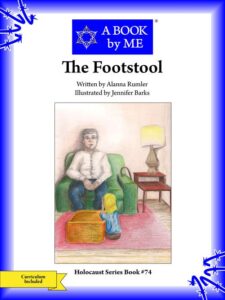The Footstool
Written by Alanna Rumler and Illustrated by Jennifer Barks
A BOOK by ME - True Stories Written by Kids for Kids
Jozef and Helena’s granddaughter somehow learned of my work preserving WWII stories. Amanda told me about her grandparents who were Polish slave laborers during the war. While they worked, their children were taken to “daycare”. Soon after arriving at Dachau, a Nazi guard gave her grandmother a note saying that her daughter Josephine had died and they were not permitted to see her body.
The word “Aryan” refers to people with blond hair and blue eyes. The Nazis thought they were superior and sweet young Josephine’s hair was blond and her eyes were blue. They believed the Nazis had taken her because of her appearance. Amanda and I researched the Nazi’s Lebensborn Project which involved taking children of slave laborers away from their parents and placing them in nurseries run by the Nazi SS. The first nursery was set up in 1936 near Munich. When the war ended, Allied troops discovered hundreds of children in nurseries, aged from six months to six years old. Some estimates suggest that around 200,000 Polish children ended up in orphanages, forced labor camps or other institutions. Many of these children were never reunited with their families, and those who were often faced tremendous emotional and psychological challenges.
The search for lost children was complicated by the chaos of post-war Europe, changes in borders, and the displacement of millions of people. Various organizations and individuals worked to reunite families, but the process was difficult. Overall, while some parents were able to find their children, most, like Amanda’s grandparents, were left in anguish, never knowing what happened to them. The thought of poor Jozef looking for Josephine until the day he died still makes my heart break. The Nazis were experts at extermination, violence, oppression and dehumanization.
Deb Bowen
Executive Director Understanding Works

Jennifer Barks, Illustrator

Alanna Rumler, Author
The Footstool is a true story about a husband and wife who were taken from their happy lives in Poland to serve as forced labor under the Nazis. When I met their granddaughter Amanda, I learned that Jews were not the only targets of the Nazis during WWII. This young Catholic couple’s story will teach you something about the Poles who were taken from their homes and forced into doing something they did not want to do. – Alanna Rumler, Author
Jozef Kodyra – As told through the eyes of his granddaughter, Amanda Kodyra Baumgardner
My grandfather, Jozef Kodyra, was born July 7, 1913 in New York. His birth in America made him a U.S. citizen. In 1921, when he was still a young child, his family moved to Poland to build and grow their family farm.
My grandmother, Helena Sudol, was born February 2, 1917 in Wiltschawola, Poland, where she too lived on her family farm. They married in 1937 and lived in several towns in Ukraine and Poland. They finally settled in Malynsk.
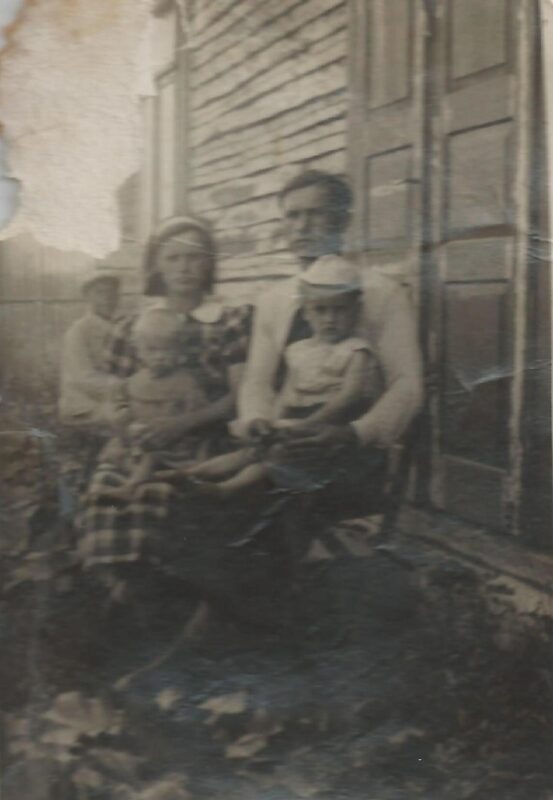
Jozef & Helena Kodyra with sons Gene & Chester in the ghetto
My grandparents had five children. Three of them, Gene, Chester, and Josephine, were born before World War II. My grandfather worked with his father on their farm and also, worked for the Polish Embassy. In 1939, the Nazis invaded Poland and took the entire family to a holding camp (ghetto) outside of Pobiedziska. They were taken, not because they were Jews, but because they were Polish. From the ghetto, they were forcibly sent on a two-week journey in an overcrowded railcar to Burghausen, Germany. When the train stopped, they found themselves at a concentration camp called Dachau.
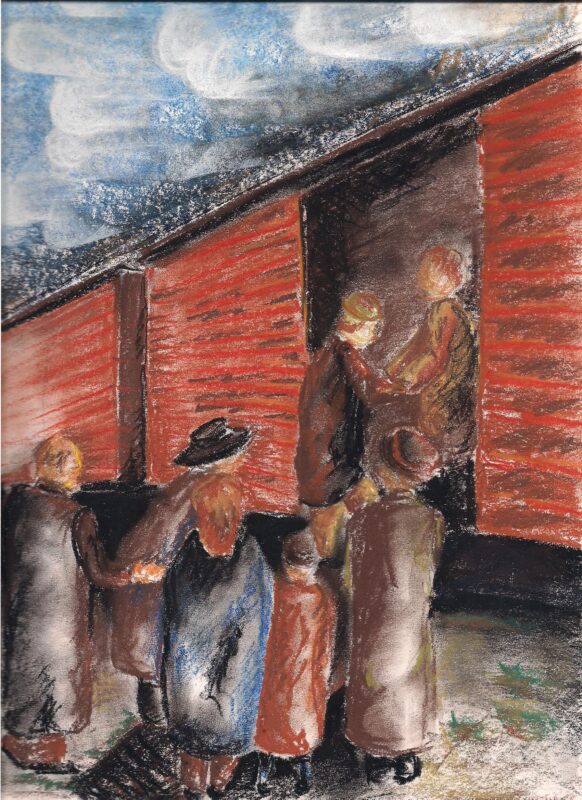
My grandfather was forced to work cleaning up garbage in the streets, and my grandmother had to work at a cemetery. Their children were sent to “daycare” and not allowed to be with them. Just a few days after arriving at the labor camp, my grandmother was handed a note by a Nazi guard stating that her daughter Josephine had died of tuberculosis. My grandparents were never allowed to see her body. They believed the Nazis took her to keep as their own since she was Aryan-looking. Aryan referred to the Nazi’s racist idea that blond-haired and blue-eyed people were superior.
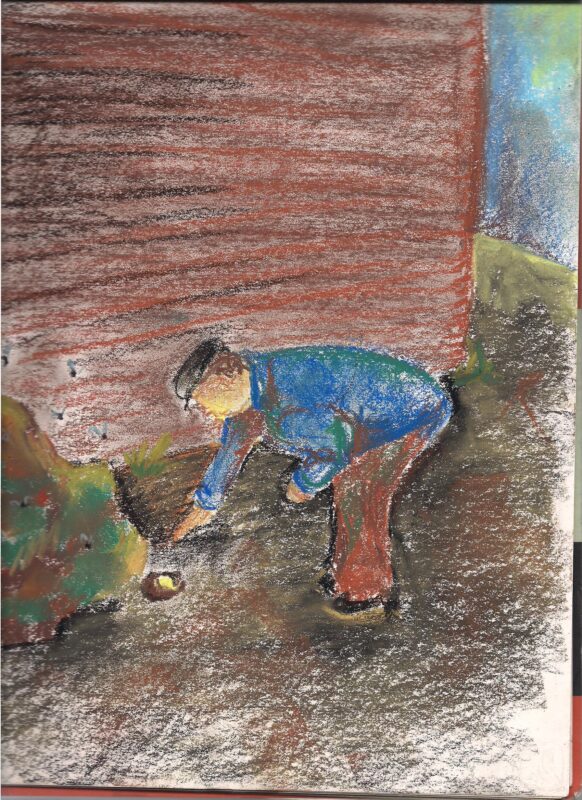
My grandparents and their children were in the Dachau camp for eighteen months until they were liberated in 1945. From there, they were transferred to a Displaced Persons (DP) camp in Augsburg, Germany, where they stayed for three years. While they were in the DP camp, another child, Theresa, was born. Since their home had been destroyed in the war and my grandfather had US citizenship, they waited with other DPs to gain work sponsorship, which would allow them to come to the United States. On February 2, 1949, they boarded the ship SS General Sturgis to make their way to America. My grandfather’s sponsorship brought them to Keota, Iowa. There, my grandfather worked as a farmer. They later moved to Kewanee, Illinois, where he worked at a factory and built their family home. There, in 1951, they had their last child, John, who is my father.
My grandfather searched for Josephine until he passed away in 1986. He believed whole-heartedly that the Nazis had taken his daughter, and he would not give up hope that someday she would be found. I continue to search for answers to her true fate.
My grandmother never spoke of these events, as they were just too painful for her. My grandfather entrusted me with the stories of these horrific events they had endured all those years ago. Nearly every day, I would eagerly run to his house after school to hear the next story. I’m truly blessed to have learned so much from him and feel it’s my path in life to make sure my family’s story is told and never forgotten. Without my grandparents’ will to survive, I would not be here today to tell their story to my children and to you.
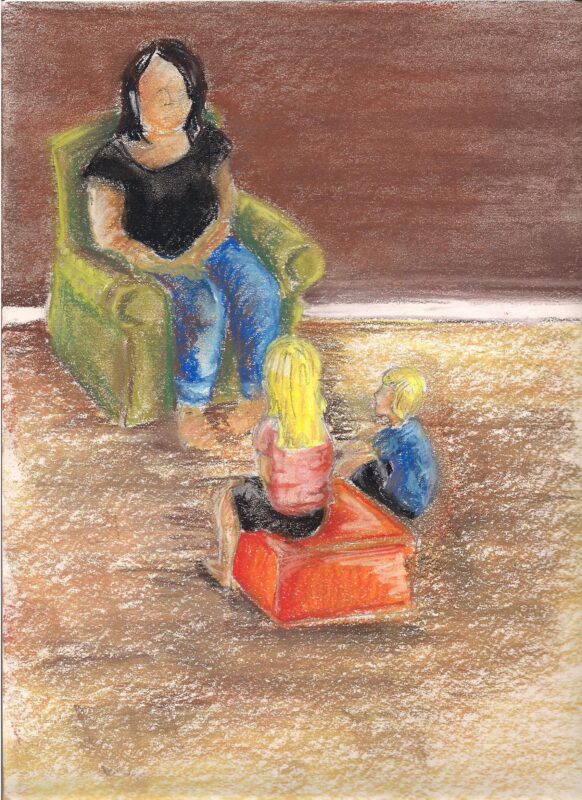
My grandparents survived the horrors of Hitler’s Germany to finally make their way to the safety of Iowa. They were fortunate to immigrate to the United States, which truly lived up to its reputation as the Land of Opportunity. Here they pose with their children on a John Deere tractor. As you see, one photo was used on the cover of Iowa Farm and Home Register, a monthly newspaper published by the Register and Tribune Company of Des Moines, Iowa. Only in America!

A BOOK by ME, a book series developed by Deb Bowen, empowers students to preserve history by telling the story of unsung heroes in our communities. For the young participants, it’s a guided cross-curricular project that gathers stories of people who do amazing things but have received little or no recognition. Students learn how to publish a picture book that is a primary source document with photographs and a biography.
Since 2003, Deb Bowen has been arranging meetings between students and individuals from the WWII generation. This intergenerational storytelling results in unique storybooks written and illustrated by kids for kids in the A BOOK by ME series. More about Deb Bowen >


